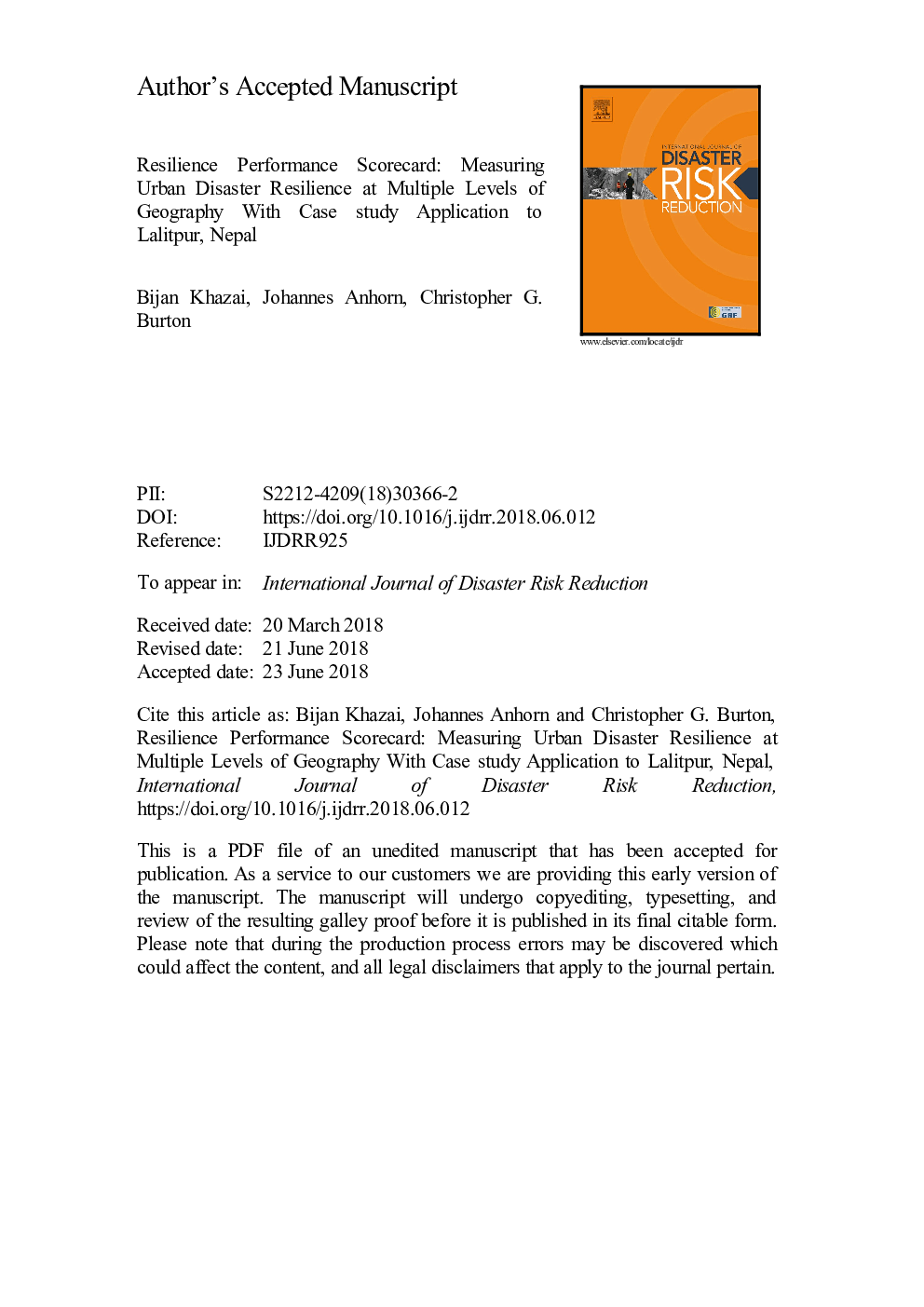| Article ID | Journal | Published Year | Pages | File Type |
|---|---|---|---|---|
| 7471208 | International Journal of Disaster Risk Reduction | 2018 | 36 Pages |
Abstract
Making a city disaster-resilient means understanding the capacity of communities and decision-makers to actively adapt to, cope with, and transform in view of potential threats. Urban resilience needs to be considered a multi-dimensional concept, visible at multiple levels, and highly dynamic. Various indicator frameworks rely on pre-arranged indicator sets and beneficiaries to measure resilience neglecting the need to dynamically adjust indicators to the context of specific places or sub-city levels of geography. The purpose of this paper is to introduce an approach for measuring and monitoring resilience within cities. The Resilience Performance Scorecard (RPS) is a multilevel and multi-scale self-evaluation tool that empowers stakeholders to quantitatively assess resilience parameters based on primary source information. This scorecard approach will lead to a highly contextualized resilience appraisal reflecting the goals and objectives of the local actors and cannot be substituted by a ready-to-go, generic questionnaire. To demonstrate the RPS approach as a tool to guide and enable local policy makers and communities to establish priorities for more in-depth analysis, to allocate funds, and to develop emergency and disaster management programs more effectively, we implemented the RPS with city officials and community stakeholders of Lalitpur before and after the 2015 Nepal Earthquakes.
Keywords
Related Topics
Physical Sciences and Engineering
Earth and Planetary Sciences
Geophysics
Authors
Bijan Khazai, Johannes Anhorn, Christopher G. Burton,
